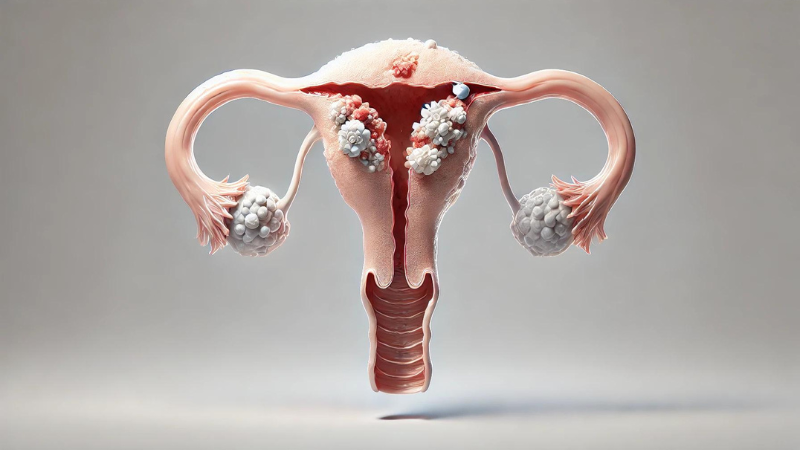Cervical Cancer: A Comprehensive Guide to Risk Factors and Screening
Sep 26, 2024
Cervical Cancer: Lifestyle Habits That Increase the Risk and How to Prevent Them
Cervical cancer remains a significant health concern for women worldwide, largely due to its association with human papillomavirus (HPV) infection, which is the primary cause of this disease. However, certain lifestyle habits can exacerbate the risk of developing cervical cancer. Understanding these risks is crucial for effective prevention.
Lifestyle Habits Increasing Cervical Cancer Risk
-
Smoking: Women who smoke are at a higher risk for cervical cancer. The toxic substances in tobacco can damage the DNA in cervical cells, making them more susceptible to HPV infection. Studies have shown that smoking can nearly double the risk of cervical cancer among women infected with HPV. Poor Diet: A diet low in fruits and vegetables can contribute to an increased risk of cervical cancer. Nutrient-rich foods provide essential vitamins and antioxidants that help boost the immune system, potentially aiding in the body’s ability to fight HPV infections.
-
Lack of Regular Screening: Regular Pap smears and HPV tests are vital in detecting cervical changes before they develop into cancer. Women who do not undergo these screenings regularly are at a heightened risk, as early signs of cervical cancer may go unnoticed .
-
High-Risk Sexual Behavior: Engaging in unprotected sex or having multiple sexual partners can increase the likelihood of HPV exposure. Consistent use of condoms can significantly reduce this risk, although they do not provide complete protection.
-
Immunosuppression: Women with weakened immune systems, whether due to HIV infection or immunosuppressive medications, are more susceptible to HPV infections, which can lead to cervical cancer.
Prevention Strategies
Preventing cervical cancer involves adopting healthier lifestyle habits and making informed health decisions:
1. Quit Smoking
- If you smoke, seek help to quit. Smoking cessation programs, counseling, and medications can support your efforts. Avoiding tobacco is one of the most effective ways to lower your risk of cervical cancer .
2. Healthy Diet
- Incorporate a balanced diet rich in fruits, vegetables, whole grains, and lean proteins. Foods high in antioxidants, such as berries and leafy greens, can help strengthen your immune system and fight infections.
3. Regular Screening
- Schedule regular Pap tests and HPV screenings as recommended by your healthcare provider. These tests can help detect any changes in the cervix early, allowing for timely intervention .
4. Safe Sexual Practices
- Practice safe sex by using condoms and limiting the number of sexual partners. Educating yourself and your partners about HPV can also help reduce transmission.
5. Vaccination
- Consider getting the HPV vaccine, which is effective in preventing the strains of HPV most commonly linked to cervical cancer. It is recommended for preteens but can be given up to age 45 .
6. Manage Stress and Health
- Maintain a healthy weight, exercise regularly, and manage stress through activities like yoga or meditation. A well-rounded approach to health can bolster your immune system and overall well-being.
Conclusion
Awareness and proactive management of lifestyle factors can significantly reduce the risk of cervical cancer. By adopting healthier habits, women can empower themselves to take charge of their health. Regular screenings, a nutritious diet, and safe sexual practices are key components of a comprehensive approach to cervical cancer prevention.
For more information on gynecological health and cancer prevention, visit our website: Steris Online Gynaecology.
Recent Post

Why Doctors Prescribe Pregabalin with Epalrestat and Methylcobalamin for Nerve Pain Steris Healthcare.

Steris Healthcare Pvt Ltd Radiates Excellence at the Dec 2025 ZEE Media Global Innovation & Leadership Summit, London!

Terbinafine 250mg & Itraconazole 100mg: The Ultimate Solution for Stubborn Fungal Infections Steris Healthcare.

Understanding Nebivolol 5mg & S-Amlodipine 2.5mg: A Powerful Combo for Heart Health

FLAVOSHIELD 500: The Complete Guide to Micronized Purified Flavonoid Fraction for Venous Health Steris Healthcare.

Unlocking Relief: How Egolix 150mg Treats Endometriosis Pain Steris Healthcare.

Isosorbide Mononitrate 60 mg in Long-Term Angina Management: Role and Best Practices Steris Healthcare.

How Ribavirin Capsules Help in Treating Chronic Viral Infections Steris Healthcare.

Mefenamic Acid With Paracetamol Suspension Effective Relief for Pain and Fever in Kids Steris Healthcare.

Levosalbutamol and Ipratropium Bromide Respirator Solution Quick Relief for Wheezing & Tight Airways Steris Healthcare.

